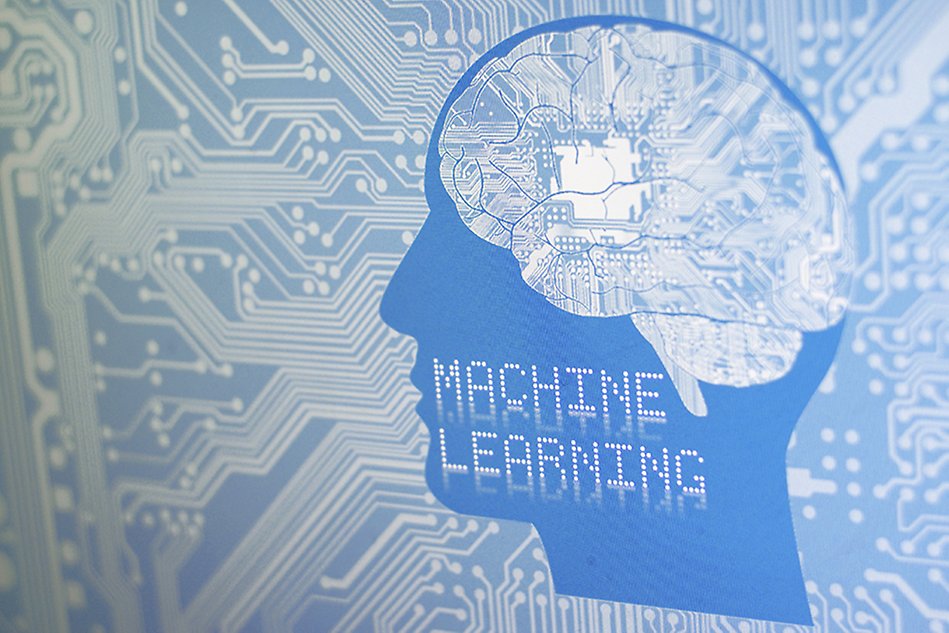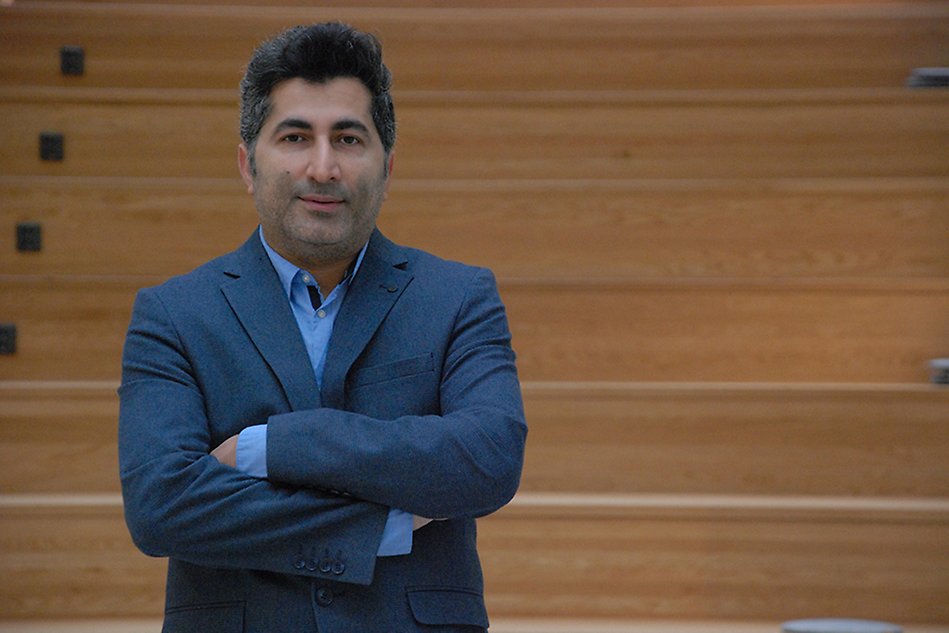Future AI needs to solve problems without labels
Meet researcher Hadi Fanaee who works with predicting errors and solving problems by using AI. He believes that the greatest possibilities for AI lie in so called unsupervised learning where machine learning algorithms find patterns and deviations without being trained with the correct answers, that is, without the use of labelled data.

“There is less research on unsupervised learning than on supervised learning, but that’s not a problem for me. I like challenging tasks!”
Hadi Fanaee
Wind turbines is a common sight in our landscape. Constructions up to 70 meters tall, majestically spinning their rotor blades. But if the winds get hard and the spinning gets out of control, the effects can be disastrous.
“If the braking systems fail, a high wind situation can lead to the turbine exploding. Preventive maintenance is essential, but it is also costly and dangerous”, says Hadi Fanaee, Associate Senior Lecturer at the School of Information Technology, Halmstad University.
Potential problems need to be detected at a very early stage, and the same can be said about a vast number of industrial appliances. That is why anomaly detection is a field for researchers working on data mining and machine learning. It is also one of Hadi Fanaee’s main focuses in his work at the University’s Center for Applied Intelligent Systems Research, CAISR. In short, anomaly detection builds on algorithms that combine a large amount of sensor input with external parameters – in the case of wind turbines, those parameters can be wind speed and temperature. From a very large data set, the machine learning algorithm is designed to predict abnormal states as early as possible, so that problems can be solved before they get serious.
What is machine learning?
Machine learning is a sub-field of artificial intelligence that gives machines the ability to learn and improve automatically through experience and by the use of data. Thus, instead of explicitly programming a machine to perform a task, it is programmed to learn how to perform the task. Machine learning algorithms build a model from "training datasets", then use this model to make predictions or decisions. The algorithms can be divided into three main groups based on their purpose – supervised learning, unsupervised learning and reinforcement learning.
Internet of Things gives data mining opportunities
Hadi Fanaee describes his own overarching research goal as trying to find impactful data problems, preferably examples seen in many different fields, and develop efficient AI solutions to them. The core challenge is always to find interesting patterns in a large amount of data, within a reasonable timeframe. Aside from anomaly detection, Hadi Fanaee works with analysis of multi-way data and with time series mining. An important collaboration partner is the international industry giant Alfa Laval, producers of heat exchangers, separators and more.
“Alfa Laval has recently started to connect their machines to the Internet of Things. They now have measurements from sensors on multiple machines, all collected in one portal. We apply time series mining to mine frequent patterns and detect important changes in them”, says Hadi Fanaee.

Hadi Fanaee, Associate Senior Lecturer at the School of Information Technology, works at Halmstad University’s Center for Applied Intelligent Systems Research, CAISR.
Initiating collaboration around AI
Hadi Fanaee was born in Iran and always loved to travel and experience different cultures. This brought him to Portugal for his PhD, and then to Norway.
“Halmstad was only four hours away from where I lived in Norway. When this position at CAISR was advertised, I felt it was just right for me. I didn’t want to work only in industry or only with theoretical research. I wanted to do both. I had other options, but CAISR was the best choice for me”.
At Halmstad University, he also teaches a course in AI for executives. The aim is to present an overview of AI’s current possibilities, technical tools and applications.
“I want to give managers a realistic image of AI, not the exaggerated one that comes from AI vendors or the negative one that comes from Hollywood.”
Hadi Fanaee is also coordinating the newly started network Halmstad Professionals for individuals interested in AI, data analytics, cyber security, service design and business intelligence. There will be lunch seminars and workshops for network members.
“The aim for the network is to gather professionals from the industry and the academia for knowledge exchange and inspiration, creating the possibility for an increased collaboration”, says Hadi Fanaee.
About Hadi Fanaee
Hadi Fanaee was born in 1983 in Mashhad, Iran. He studied at Shiraz University in Shiraz, Iran, where he graduated with a Master of Science in 2010. Hadi Fanaee received his PhD in 2015 from University of Porto in Portugal, with the thesis “Tensor-based Event Detection”. He started at the School of Information Technology at Halmstad University in 2020 and works as Associate Senior Lecturer at the Center for Applied Intelligent Systems Research (CAISR).
Unsupervised learning is the future
When he looks ahead, Hadi Fanaee is convinced that the greatest possibilities for AI lie in unsupervised learning. The standard paradigm today is supervised learning, which means training machines with carefully labelled data. A human expert must label data and tells the algorithm whether it’s normal or abnormal, before the algorithm can learn to find similar abnormalities in a new data set. This labelling is very time consuming and expensive. Furthermore, the data quality depends heavily on the expertise of the person doing the labelling. With unsupervised learning, the data is instead unlabelled, and the algorithm must be designed to look for interesting patterns unconditionally.
“By comparing patterns with older data records, the algorithm should figure it out eventually and be able to predict abnormalities. I think this is where the greatest potential of AI lies. An expert cannot predict all possible causes of anomalies, and you don’t find high quality data in most companies. How do we make sure that the labelled data is accurate at all? This question needs to be solved, and I believe that can be done through putting more time and energy into unsupervised learning. There is less research on that than on supervised learning, but that’s not a problem for me. I like challenging tasks!”
Text: Lisa Kirsebom och Louise Wandel
Top illustration: iStock
Photo: Roland Thörner

